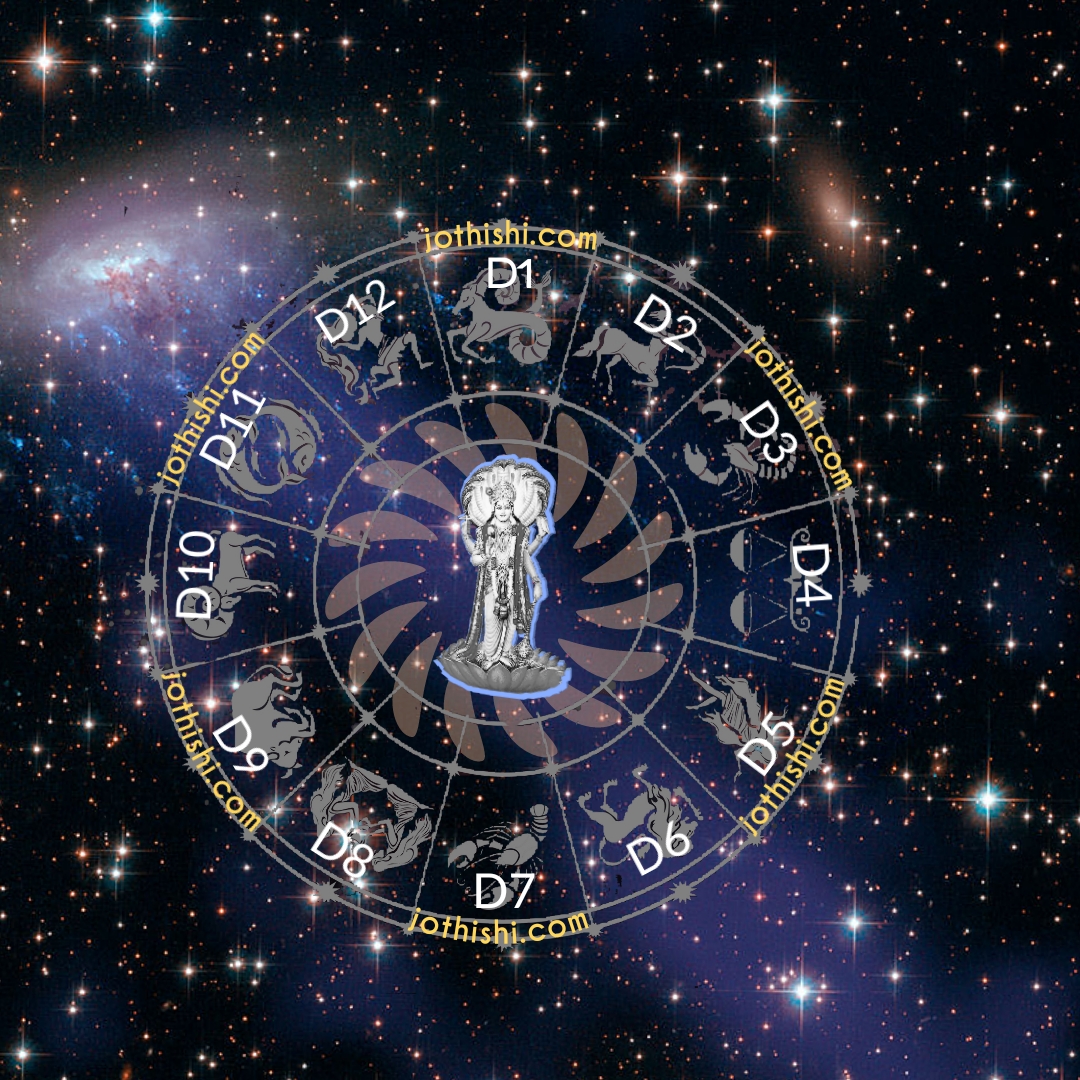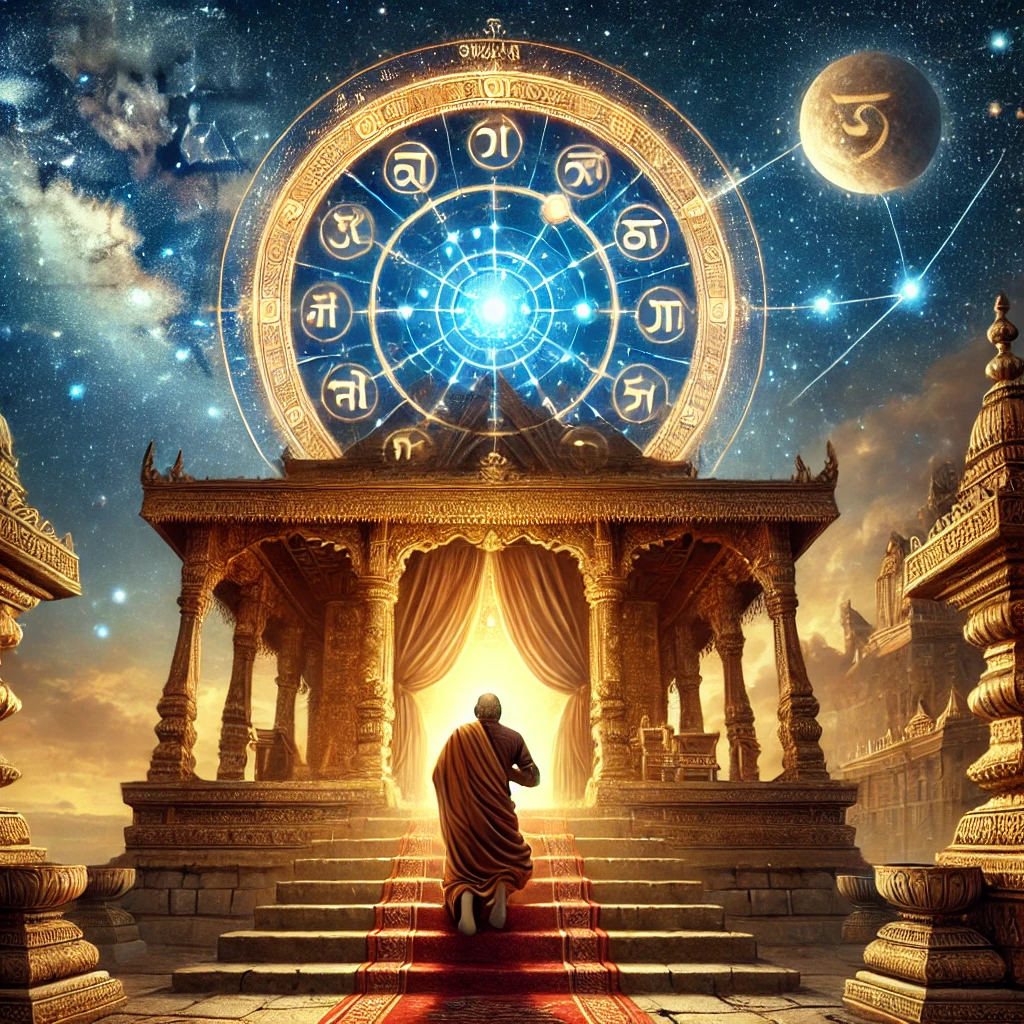Author: jothishiai
-

Gemstones and Bhagya
Gemstones and Bhagya Introduction Gemstones have been an integral part of Vedic astrology and spiritual practices for centuries. These precious and semi-precious stones are believed to possess unique energies that can influence an individual’s destiny (Bhagya). The concept of Bhagya, often translated as fate or fortune, is an essential component of astrology, determining a person’s…
-

Nadi Dosh
Introduction Nadi Dosh is a significant astrological concept in Vedic astrology that affects marriage compatibility. It arises when both partners belong to the same Nadi in the Ashtakoota Milan system of Kundali matching. The presence of Nadi Dosh can lead to issues in marriage, including health concerns, progeny problems, and disharmony between partners. Understanding Nadi…
-

D4 Chaturthamsa Chart
The D4 Chart, also known as the Chaturthamsa Chart, is an important divisional chart in Vedic astrology used to analyze fortunes related to property, land, real estate, and overall material prosperity. In Sanskrit, “Chaturthamsa” means the fourth division, highlighting its connection to the fourth house of the natal chart (D1). Since the fourth house governs…
-

D12 Dwadasamsa Chart
The D12 chart, also known as the Dwadasamsa chart, is a vital component of Vedic astrology. It offers deeper insights into one’s life by dividing each sign into 12 equal parts, known as “Dwadasamsas.” Each Dwadasamsa spans 2.5 degrees of the zodiac sign. Introduction to Vedic Astrology and Divisional Charts Vedic astrology, also known as…
-

Tithi
Introduction Tithi, an essential component of the Hindu lunar calendar, plays a significant role in Vedic astrology. It determines auspicious and inauspicious timings, influences personality traits, and is vital for conducting religious rituals. The term Tithi refers to the lunar day, calculated based on the angular distance between the Sun and the Moon. Understanding Tithi…
-

Personality and Vedic Astrology
Introduction to Vedic Astrology Vedic astrology, also known as Jyotish Shastra, is an ancient Indian system of astrology that dates back thousands of years. It is based on the belief that the positions and movements of celestial bodies—such as planets, stars, and the moon—at the time of one’s birth significantly influence their personality, behavior, and…
-

Minds Desire and Vedic Astrology
Introduction The mind plays a crucial role in shaping an individual’s perception, decisions, emotions, and overall life journey. Vedic astrology, an ancient science rooted in the wisdom of the Vedas, provides deep insights into the workings of the mind. It explores how planetary influences, lunar positions, and astrological combinations impact mental faculties, emotions, and psychological…
-

Respect and Vedic Astrology
Introduction Respect is a fundamental virtue that underpins human interactions, guiding relationships, ethics, and personal growth. It manifests in various forms—respect for oneself, others, nature, traditions, and the cosmos. Vedic astrology, an ancient discipline rooted in the Vedas, offers deep insights into the significance of respect and its karmic implications. This essay explores how respect…
-

Mantra and Vedic Astrology
Vedic astrology, also known as Jyotish Shastra, is a form of astrology that originated in ancient India and is deeply rooted in the Vedas, the oldest sacred texts of Hinduism. The term “Jyotish” translates to the “science of light,” and it seeks to understand the influence of celestial bodies on human affairs. Vedic astrology relies…
-

Obesity andVedic Astrology
Understanding Obesity Obesity is a medical condition characterized by excessive body fat accumulation that presents a risk to health. It’s typically measured using the Body Mass Index (BMI), which is a person’s weight in kilograms divided by the square of their height in meters. A BMI of 30 or higher is classified as obese. Obesity…